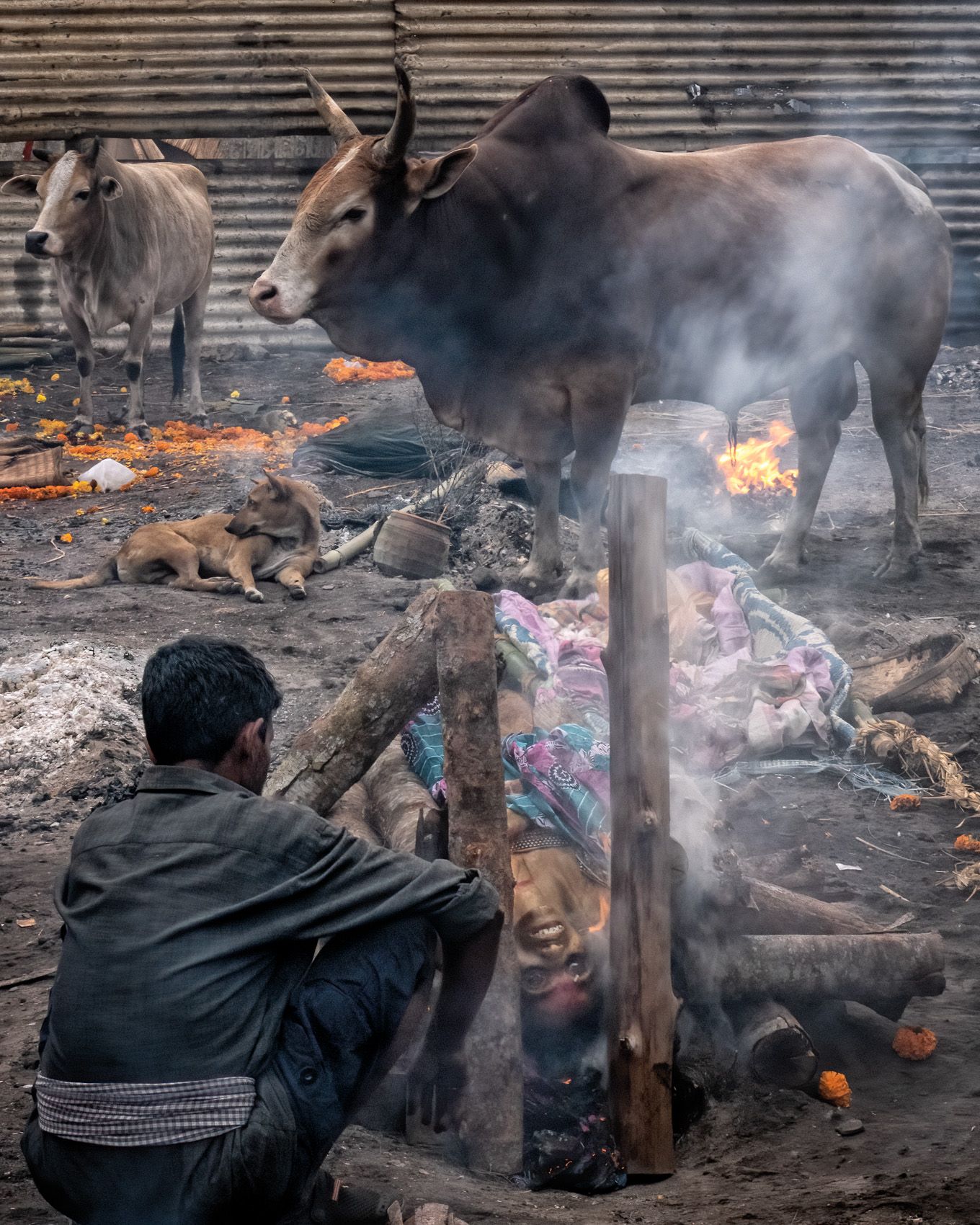ANTYESTI: The Dead and the Living at Swargadwar, Puri’s Cremation Ground
As they have been for millenia, most Hindus continue to be cremated at death in a ritual called antyesti, the final rite of passage of the present life cycle, that releases the spirit from the body. The details of the rite may vary by such factors as region, caste, gender, age and economic condition but the cremation will normally take place on a pyre in a designated shmashana or cremation ground on the edge of a village or town and in proximity to a river or the sea where the ashes may be deposited. The dead bodies, which are considered polluting, are normally handled by attendants from the dom subcaste or another low caste; a Hindu priest is present to perform the necessary rituals and prayers and often to light the fire. Wood is stored and sold on-site, often at inflated prices; ghee (clarified butter) is poured onto the corpse to intensify the flames. This portfolio was made at Swargadwar, the cremation ground in the holy town of Puri in Odisha, site of the 12th century Jagganatha Temple that is a focus of pilgrimage and devotion for Hindus from all over India. Swargadwar is located a block from the beach on the Bay of Bengal. The washed, decorated and cloth-wrapped bodies of the deceased are brought to the cremation ground on bamboo stretchers, carried through the town or transported by ambulances, and accompanied by family members. As an observer from another culture, I was struck by the relative absence of overt signs of grief, the matter-of-factness that characterized much of the process—I had witnessed more elaborate, emotional, and spiritually moving cremations in Varanasi. Cows were everywhere, warming themselves by the fires and munching on the garlands that had bedecked the corpses and were now strewn on the ground; people picked through the ashes and the discarded effects of the newly cremated dead. The experience, initially disconcerting, over time became strangely comforting. Adjoining the cremation ground is a shrine devoted to the goddess Kali, the most fierce and powerful form of Shakti, the embodied energy of Shiva, associated with death, destruction, cremation grounds, and also with moksha, liberation from the cycles of death and rebirth. An image from this shrine ends the portfolio.











